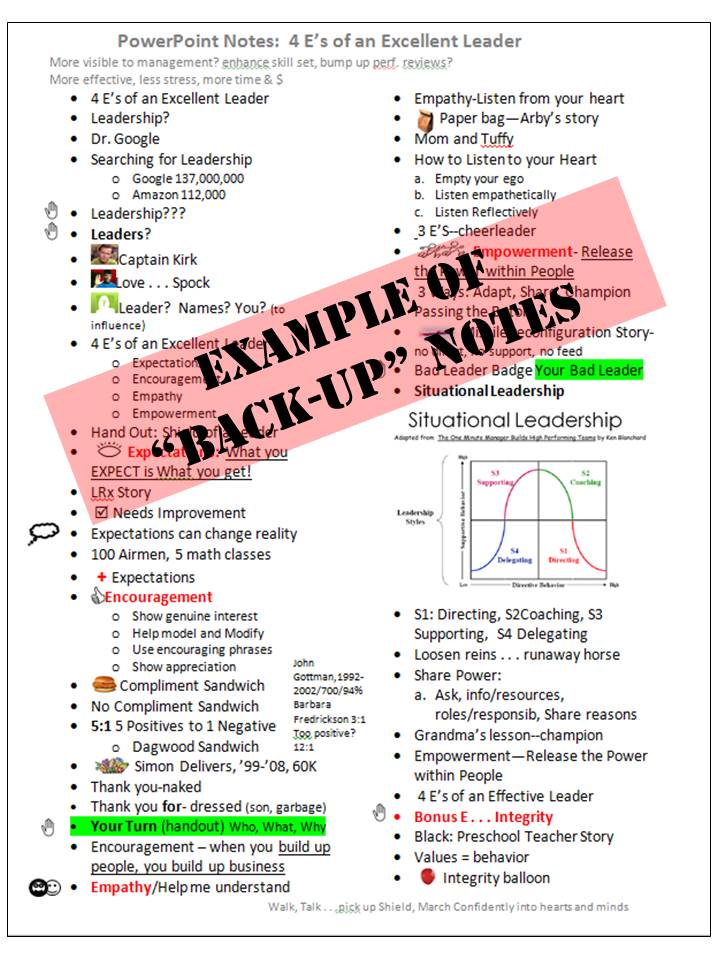One of the biggest fears that people have about public speaking is the fear of forgetting what they are going to say. Using notes can reduce that fear greatly, but at the same time create a barrier to audience engagement.
Here are 7 tips on using speech notes more effectively so that you can engage and be present with your audience:
- Talk to people, not to paper. Talking while you are looking at your notes is the kiss of death for audience engagement. Instead, pause, look down to snatch up a phrase or concept, look up, and then speak. If you must, keep track by placing a finger on your text.
- Speak from an outline or from key word notes. In addition to making it easier to look down and snatch up a few words, key word notes allow you to improvise your wording to what is most natural and conversational. Speaking from a verbatim script (or trying to memorize one), can make you sound stilted. You can make successive versions of notes as you practice, reducing the words each time. Outline and keyword notes also make it easier to quickly review your content and to practice in the car.
- Make sure you can read your notes. Legibility and size of lettering is important. I check that I can glance at my notes on a table next to me and still read them easily. Typed notes, in a 14-point font or larger will work for most people. In presentation software, you can add presentation notes, which you can view while delivering the slideshow (PowerPoint, Keynote), however, I don’t like to be limited to staying where I can read the notes on my laptop.
- Use pictures, symbols, and colors. A picture is worth 1000 words! Use colors to highlight your main points or audience activities.
- Slide, don’t flip. Have your notes on only one side of a paper, so that you don’t have to flip the paper over. Flipping the notes is very distracting (as is playing with your notes). Use note cards, in a light, neutral shade, if no lectern (or nearby table) is available. Number your cards so you can put them back in order if you drop them. If using a lectern, use sheets of paper (I usually put my notes in a sheet protector, as that enables me to easily reuse them, and makes it easier to slide). I typically only have one page of notes–often tied to my PowerPoint slides.
- Have notes as a backup. Don’t count on your PowerPoint as a prompt. If there is a technical failure and your PowerPoint doesn’t work, you can glance at your notes to prompt your memory. The image at the top is my sheet “back up notes” for a one-hour leadership presentation. I’ve actually never used them while presenting, but have them available if my PowerPoint slides don’t work. I’ve also used them to practice my presentation while driving.
- Practice with your notes (and don’t look at your notes at all for your opening and closing). I made the mistake once of not practicing with my notes and then when it was time to present, I felt a little panicked because I couldn’t easily find where I had left off.
Notes should remind you of what to say, but not tell you exactly how to say it (because you did practice, right?)
Do you have tips for using notes?

